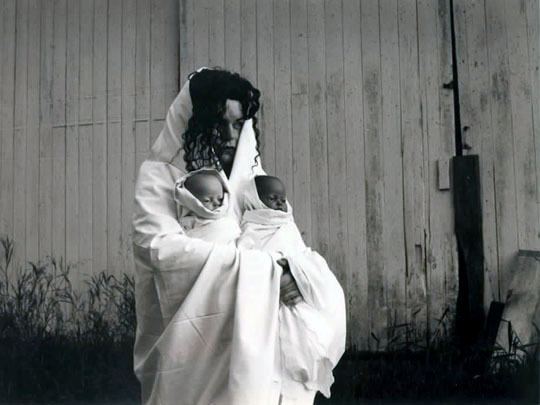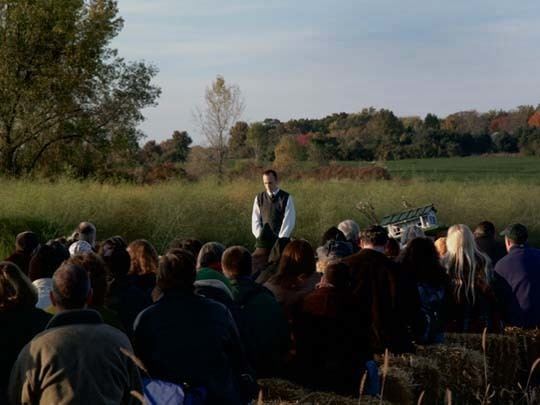Name Joan Dickinson | Role Artist | |
 | ||
Joan Dickinson is an American artist working in multiple forms: visual and performance art, writing, photography, farming and environmental restoration, and teaching.
Contents
- Early life
- Education and Teaching
- Creative Practice
- Selected Work
- Awards
- Other Cultural Work
- Time Arts Programming Committee 1989 1996
- Randolph Street Gallery Staff 1989 1996
- Selected Time Arts Programming 1989 1996
- References

Early life
Dickinson was born during a ferry crossing on Lake Michigan between Muskegan, Michigan and Milwaukee, Wisconsin. Her father, Harvey Thomas Dickinson of Detroit was a graduate of the Henry Ford Trade School, a non-profit high school that gave boys from impoverished families an opportunity to learn marketable skills while contributing to the support of their families. H.T. Dickinson later worked at the Ford River Rouge Complex where he met Barbara Forrester, also of Detroit. Joan is the third of their four children.
Education and Teaching
Dickinson has been a teacher for twenty-five years serving as both faculty member and visiting artist at various art schools, colleges, and universities; and in writing centers with diverse populations [students from Mexico, China, Japan, Egypt, Viet Nam, Pakistan, Norway, Iraq, Italy, Saudi Arabia, Turkey, and France], American culinary students, self-identified learning disabled students, and homeless women. Her early love of drawing and reading was fostered, initially, by Mrs. Betty Ruth Rayle, a second grade teacher at Nora Elementary School in Indiana; and her love of music and writing was similarly nurtured by Mrs. Evelyn Maun, a fourth grade teacher at Westgate Elementary School in Illinois. A first generation college graduate, Dickinson holds a doctorate from the Creative Writing Program at the University of Denver (2012). The libretto from her dissertation, an illustrated novel called The Cooking School of the Air (2012), was performed in the mountains outside of Boulder, Colorado in the spring of 2012 in the same temple where Dickinson was initiated as a priestess.
Creative Practice
Beginning as a young woman, Dickinson has developed and presented performances, exhibitions, and public art projects that merge mythological, autobiographical, geographical, and historical lines of inquiry. During a twelve-year period, Dickinson moved her creative practice to a 200-acre wetland in rural Illinois often living outdoors––sleeping in abandoned deer beds––or inhabiting a six-floor silo and bat-infested barn. In that place and its surrounds––rural, agricultural, and the beginnings of exurbia––Dickinson worked in cooperation with others to unpin straightened rivers, remove agricultural tiles, rout buckthorn, and safely conduct controlled burns. She became a beekeeper and herbalist and, for those twelve years, sat daily and nightly beneath the sun, moon, and stars in order to observe and integrate their alignments. In so doing, Dickinson familiarized herself with one place––its stories and mythologies entwined with its geographies, communities, and climate––and the wider connection of one place to others and all that is embodied within that suggestion. From that learned sensibility, Dickinson developed and presented a series of “performances” in the form in large, collaborative events in which, after months and even years of preparation, she stepped back allowing co-authorship with the landscapes and inhabitants with whom she shared a particular dwelling-place. In these ways, Dickinson embodies, in the best contemporary sense, what generations of "eco artists" and feminist practices have advocated: permeability and the interdependence of learning and making.
Other work has been presented in more traditional contemporary art spaces and theaters: the Institute for Contemporary Arts in London, the Théatre Royal de la Monnaie, Brussels, Belgium, PS 122 in NYC, Highways Performance Space in Santa Monica, California, and in Chicago: the Lyric Opera of Chicago, the Chicago Cultural Center, Hyde Park Art Center, Randolph Street Gallery, the Lurie Garden at Millennium Park, the Museum of Contemporary Art, and the State of Illinois Museum.
Selected Work
Awards
Other Cultural Work
Beginning in 1989 and continuing until early 1997, Dickinson worked at Randolph Street Gallery (RSG), the erstwhile alternative arts space in Chicago (1979-1998). Initially, Dickinson was a member of the committee responsible for performance programming (called “Time Arts” at RSG) under the direction of Mary Jo Schnell along with Peter Taub, the Executive Director of the gallery. From 1993 and until her resignation, Dickinson was the Director of Time Arts.
In addition to Time Arts programming, and what are now called “relational” art events (including the Grotto d’Amore––a fund-raiser cum ceremonial happening wherein same-sex couples and groups, inter and intra species companions, and lovers of the incarcerated could marry and divorce in a single night), Dickinson’s work, in tandem with the Time Arts Programming Committee and RSG Staff members, included the design and implementation of several public art projects beginning in 1989 with the first Day without Art events in collaboration with Encarnacion Teruel and the Mexican Fine Arts Center Museum (now called the National Museum of Mexican Art), the University of Illinois with Matthew Owens, and, with Nathan Mason, the First Presbyterian Church. On December 1, 2, and 3 of that year, portraits of people living with AIDS were projected at locations throughout Chicago: the ballroom of the museum, the student union of the university, and outdoors against the walls of the church on Michigan Avenue’s Gold Coast.
Time Arts Programming Committee (1989-1996)
Audrey Colby, Joan Dickinson, Mindy Faber, Kevin Henry, Leigh Jones, Dawn Mallozzi, Kaja Overstreet, Matthew Owens, Jeanne Parisi, Mary Jo Schnell, Ken Thompson, Ayanna U'dongo, and Mary Zerkel with guest curatorial appearances by Lin Hixson, Lou Mallozzi, Suzi Silver, and Lawrence Steger.
Randolph Street Gallery Staff (1989-1996)
Executive Directors: Peter Taub, Gustavo Parades
Interim Co-Executive Directors : Craig Harshaw, Giselle Mercier, Ken Thompson
Assistant Director: Nena Samardzija
Business Director: Michael Gallagher
Communications Directors: Sylvia DuChateau, Stefanie Rothman
Development Director: John Schmitz
Education Director: Giselle Mercier
Exhibitions Director: Paul Brenner
Office Manager: Ken Thompson
P-Form Managing Editors: Michelle Manes, Carmela Rago, Ken Thompson
Time Arts Directors: Joan Dickinson, Mary Jo Schnell
Time Arts Production Managers: Lyman Flook, Treasure Smith
Time Arts Technical Support: Scott Halvorsen Gillette, Margaret Goddard-Knop, Maggie Hoffman, Joe Silovsky, Ken Thompson
Selected Time Arts Programming (1989-1996)
Quraysh Ali, Nancy Andrews, Ron Athey, Sadie Benning, Dalida María Benfield, Jaap Blonk, Lynn Book , Mwata Bowden, Maris Bustamante, Janet Cardiff, Sandra Cisneros, William Close, Portia Cobb, Dominique Dibbell, Richard Elovich , Coco Fusco, Goat Island, James Grigsby, Essex Hemphill, In the Flesh (Series) , John Jesurun, John Malpede, Iris Moore, Jennifer Monson, Eileen Myles, Natsu Nakajima , Achy Obejas, Matthew Owens, Michelle Parkerson, Guillermo Gomez Pena, Adrian Piper, Pomo Afro Homos, Lordes Portillo, Marlon Riggs , Root Wy’mn Theater Company, Sacred Naked Nature Girls , Carolee Schneeman Dread Scott, Joe Silovsky, Theodora Skipitares, Laetitia Sonami, Patricia Smith, Spiderwoman Theater, Lawrence Steger, Chris Sullivan, That Time of the Months (Series), Blair Thomas, Rose Troche, Kitty Tsui, Brendan de Vallance, Gregory Whitehead, Dolores Wilber, Michael Zerang
